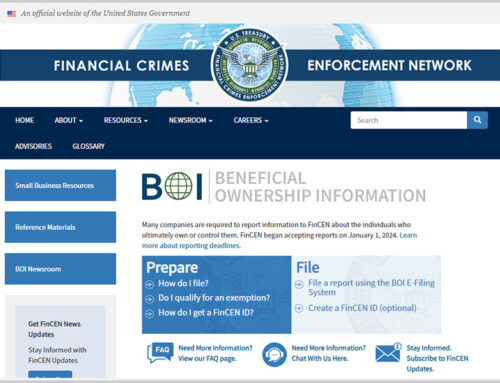Posted 10/26/23
As with other government programs during the pandemic, the IRS Employee Retention Credit (ERC) program put needed money into the hands of many needy businesses. However, as with other government programs, some people have found ways to beat the system. The IRS just released a new directive to try and deal with this.
ACTION ITEM 1: Amended income tax returns
If your company received money from the IRS after filing claims for Employee Retention Credit (ERC) refunds on your payroll tax returns during the pandemic, you must now file amended business income tax returns.
The wages used as a part of the ERC must now be removed from the business income tax return, which will, in all cases, result in income taxes due with the tax return filing.
Generally, amended income tax returns must be filed within three years of the original date of filing. The ERCs were generally associated with 2020 and 2021 tax periods. The filing dates are always a year later. This means that a 2020 tax return is filed in 2021. Add three years for the open time to amend means in 2024 the amended tax return needs to be filed to be timely.
Beyond the additional tax due, there are generally penalties and interest as well. The longer the company waits, the more it may cost in penalties and interest.
ACTION ITEM 2: Unwinding ERC
On October 19th the IRS released a notice providing guidance to companies who wish to unwind their ERC claims.
There is a new twist to the topic of ERC. They fall into three categories:
- The company has filed claims for ERC, has received money, and cashed the money from the IRS.
- The company has filed claims for ERC, and has received money, but has not deposited the money.
- The company has filed claims and has now been notified by the IRS that it is being audited.
It is truly a gamble as to what to do.
The original basis for filing an ERC claim was because of a change in sales, period over period. The percentage change was different for different periods, and the base period changed as well. That was generally a pretty mechanical calculation, which was straightforward.
Are your records solid? Was the basis on which the ERC was prepared solid?
Where the calculations were “soft” is when other situations were introduced. For example, if a local rule stated that only four people could be in a retail location due to the spacing of the patrons, then what was the calculation to determine the ERC impact? Did the retail location usually have six employees on the floor and was limited to two? Was that full-time or part-time?
Did an “ERC mill” do the work for your company? If the ERC mill is found to be preparing erroneous tax returns, the IRS does have the technical resources to know every business for which an ERC mill has prepared returns.
Through September 2023, the IRS has received 3.6 million claims. There are 600,000 claims not processed. On September 14, 2023, the IRS put a moratorium on processing returns until after January 1, 2024. The expectation is that they will find many erroneous returns in the unprocessed returns.
The important thing for each company with ERCs is to have a plan to deal with the two action items noted above.
If you need CPA assistance, let’s talk. I can be reached at Bruce@AndersenCPA.com or 818-225-8022.


